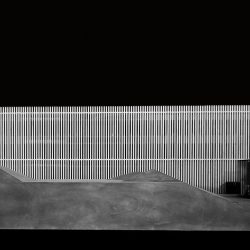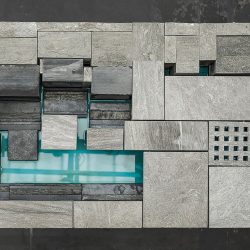
The exhibition at Werkraum Bregenzerwald shows architectural models by Swiss architect Peter Zumthor inside a building that he himself planned: the Werkraumhaus in Andelsbuch. It is by crafting spaces with models that Zumthor arrives at a stance in which materials, construction, and form come together in a unified whole. The models tell of this quest for unity. As works that visualize craftsmanship and create atmosphere, they enjoy a special reputation in the world of designers and architects. The exhibition at the Werkraumhaus demonstrates Zumthor’s stance in two ways at once: in the variety of models exhibited and in the building housing them.
The Werkraum Bregenzerwald opened its Werkraumhaus in Andelsbuch in the Bregenz Forest in 2013. The building planned by Swiss architect Peter Zumthor was conceived and built with local artisans, and as a beacon of craftsmanship it has attracted global acclaim ever since. As a center dedicated to building culture and the skilled trades it makes a fitting venue for this exhibition of architectural models to be held from 18 March to 16 September. The forty models from the Atelier Peter Zumthor are displayed both individually and in clusters over 700 square meters of indoor and outdoor space. Among them are some very recent ones and models that have never before been shown in public. The exhibition is curated by the Finnish architect and exhibition designer Hannele Grönlund in collaboration with Peter Zumthor.
Models from the Atelier Peter Zumthor enjoy a very special reputation in the world of designers and architects. They stand for a constructive way of thinking that takes its cues from the materials, for a strong visual appeal, and for a stance in which materials, construction, and form come together in a unified whole. The Zumthor models tell of this quest for unity. They show him searching for the logic of joining and combining so as to endow his architectural spaces with an atmosphere in which the building method and materials are key factors.
The Zumthor models are not presentation models; they are working models. As such, they are an answer to the advent of computer-assisted drafting and designing that has made the design process abstract and put architecture in peril of losing touch with its essential materiality. The Zumthor models counter this abstraction with their feel for objective reality, for solidity, for texture. They give us a sense of the scale and dimensions of a building’s constituent parts. They exemplify craftsmanship and the techniques by which things are joined together. They convey atmosphere. They are concrete, and not just made but actually conceived by craftsmen. The Zumthor models do not clad or conceal anything. They are honest about how they were constructed and have a recognizable anatomy. All the buildings by the Atelier Peter Zumthor are handcrafted in the broadest sense of the term, and his model studies show this.
_








